"Onbashira" is the name of the four massive logs that are stood up in each corner of the local shrines of this region. The trees used are all over 150 years old and one meter in diameter. Lugged all the way from the mountains by human hands, these colossal trees are then stood upright in the four corners of the shrine to complete the lengthy ritual renown as the Onbashira festival.
The entire region comes together to celebrate this giant festival every seven years. This particular festival, the Ono Onbashira Sai, is coproduced by the neighboring Ono Shrine and the Yahiko Shrine. The Onbashira festival is a trademark festival of Nagano and is celebrated by countless shrines all throughout the Prefecture. The largest and most impressive one is the Onbashira festival held at the Suwa Shrine. Compared to the thrilling and often dangerous rituals of the Suwa Shrine, the Ono Onbashira festival is a little more showy and offers an at-home feel, a perfect choice for those who prefer participating in the festivities. Time your trip right and come celebrate the extremely rare moments that the Ono Onbashira festival has to offer.
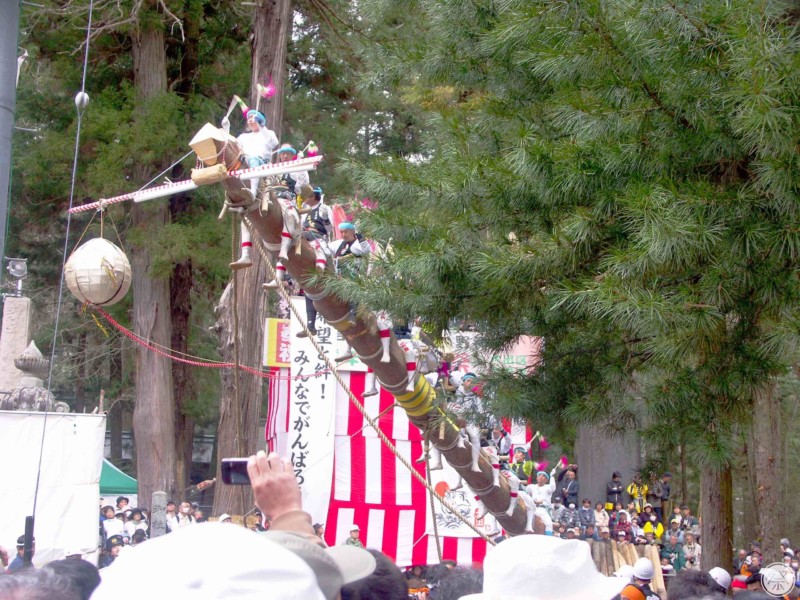
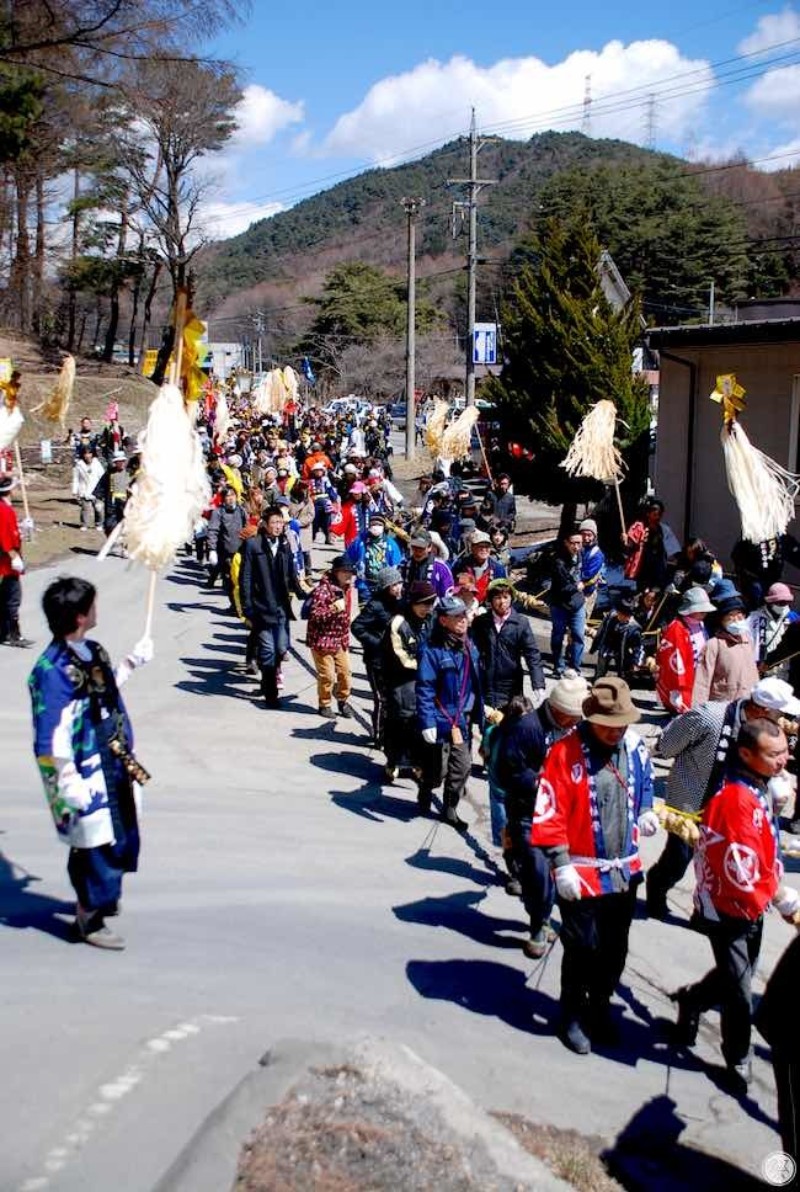

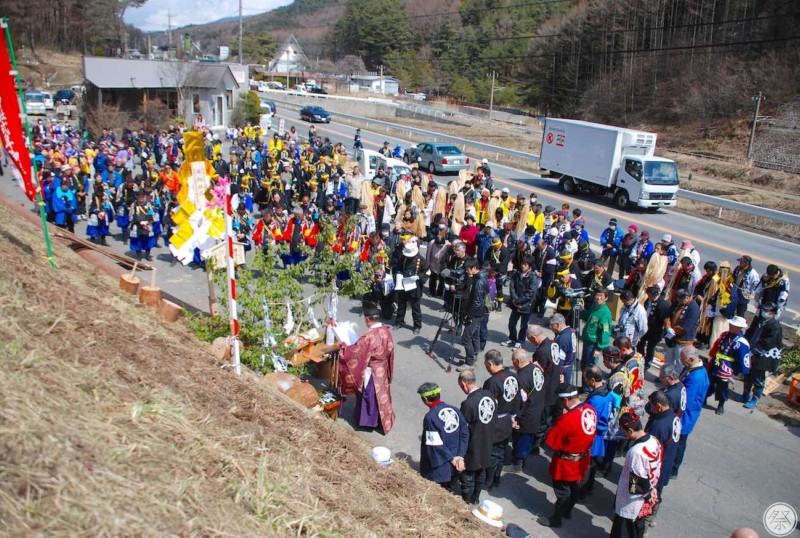
The Yamadashi is what locals call the cutting down of the selected trees in the local mountain forests—still covered in snow—and dragging them all the way to town. Don't miss the careful yet dynamic techniques used in maneuvering the giant logs through the narrow and winding mountain trails.
The Yamadashi is held separately amongst local boroughs over two days in March and are then are set to rest until the main activities of May.
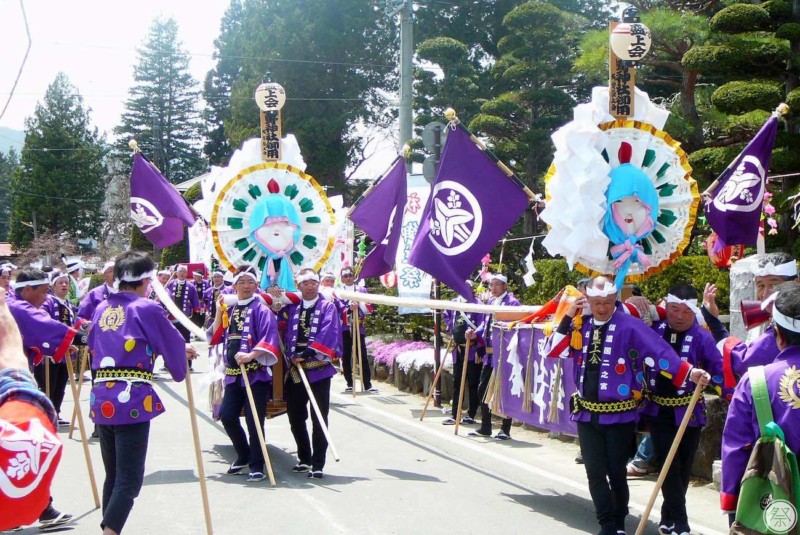

The "Satobiki" is the part of the festival where a couple dozen shrine parishioners pull the Onbashira to it's final destination using a fat 60m long rope. For ages, it is said that if you want to watch the people, visit the Suwa Onbashira, if you want to see beauty, visit the Ono Onbashira. The highlight of the Ono Onbashira is the flamboyant costumes and performances of the teams pulling the logs. The whole regions comes together as one, in harmonious fashion, to successfully drag them to their final resting place.
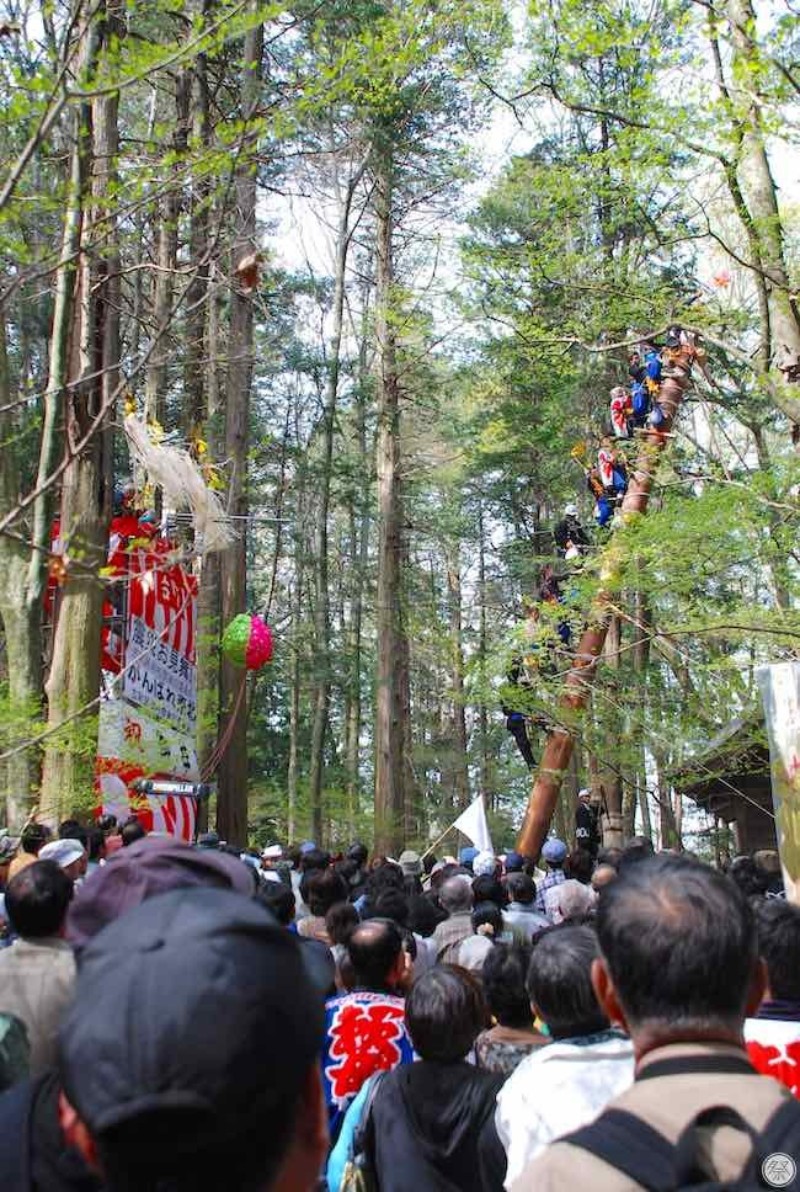
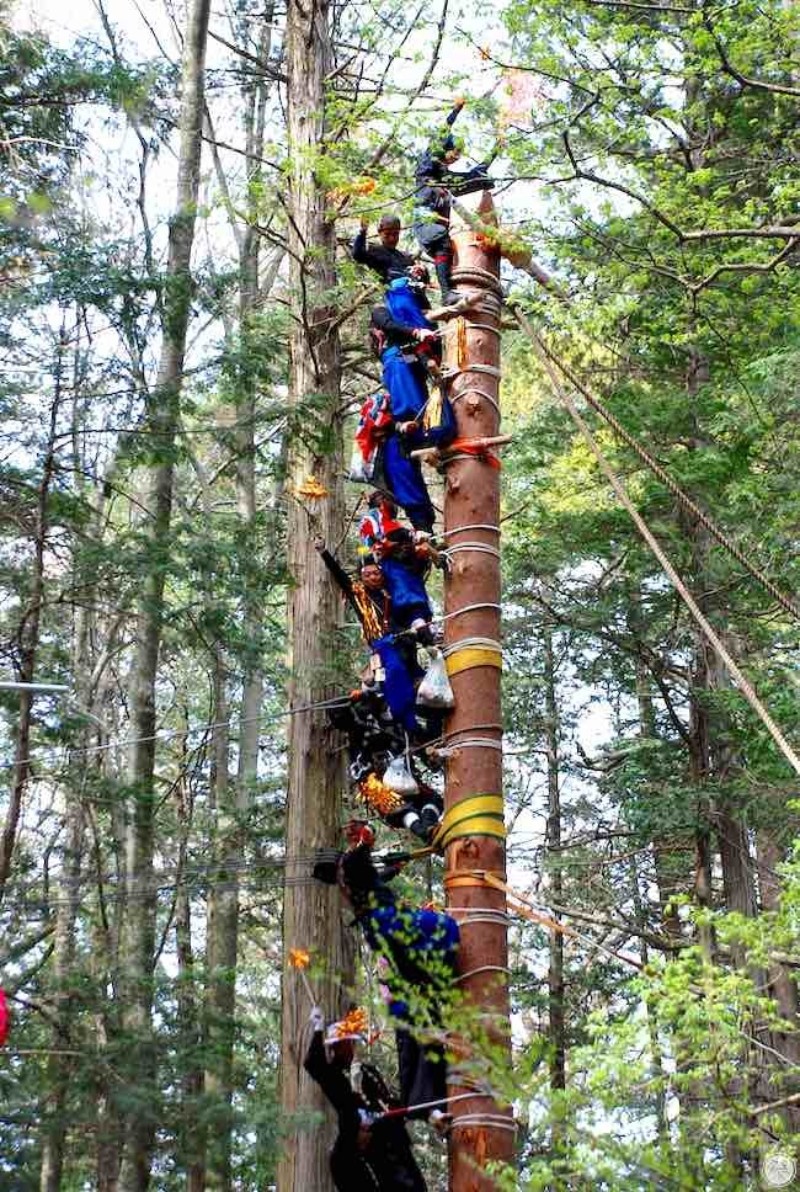
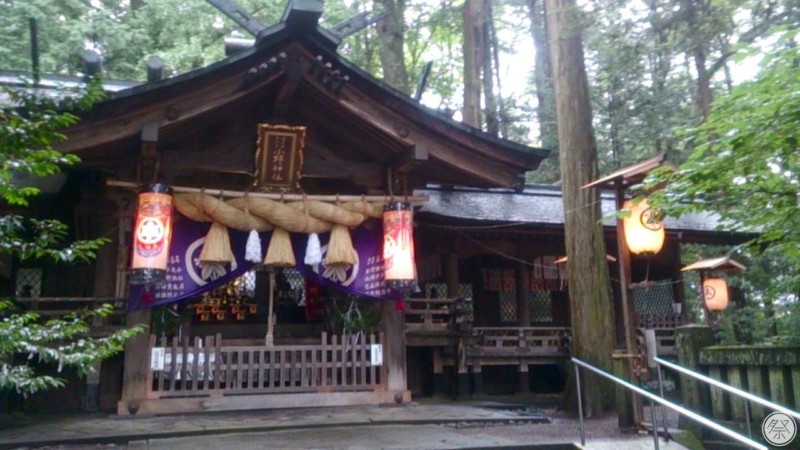
The Tate Onbashira is when the logs are stood upright in the four corners of the shrine grounds. Local men straddle the pillars as they are raised, enlivening the festival to the very end. The logs are gallantly raised using a winch, covered in men giving festive cheers, reaching 15m high. Attended by the fanfare of the local fire squad, applause rumble through the crowd as the pillars approach an upright position. Come share this amazing feeling of accomplishment and rejoice with the locals.
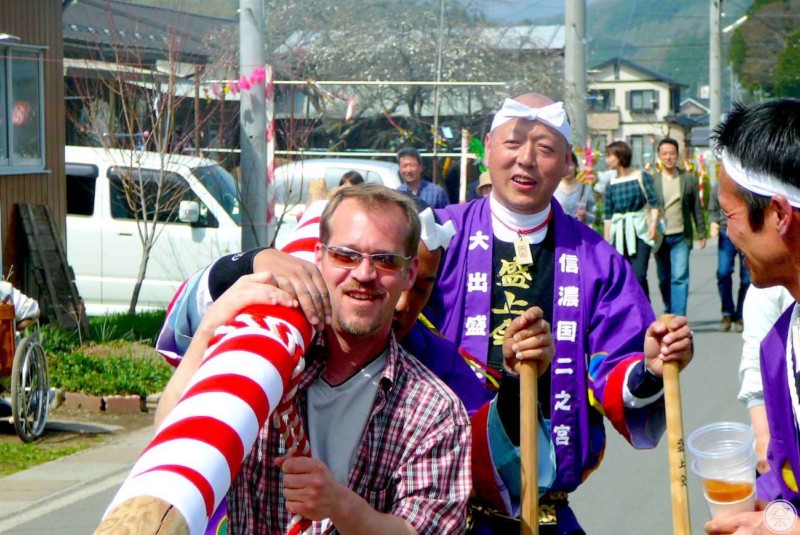
Anyone can participate at the Ono Onbashira. You can even take photographs with the massive logs during the breaks. There are people called Kiyarishu who keep a constant unbreakable rhythm for the people pulling the log to stay in time with each other. Try taking after them and raise your voice for the festivities!
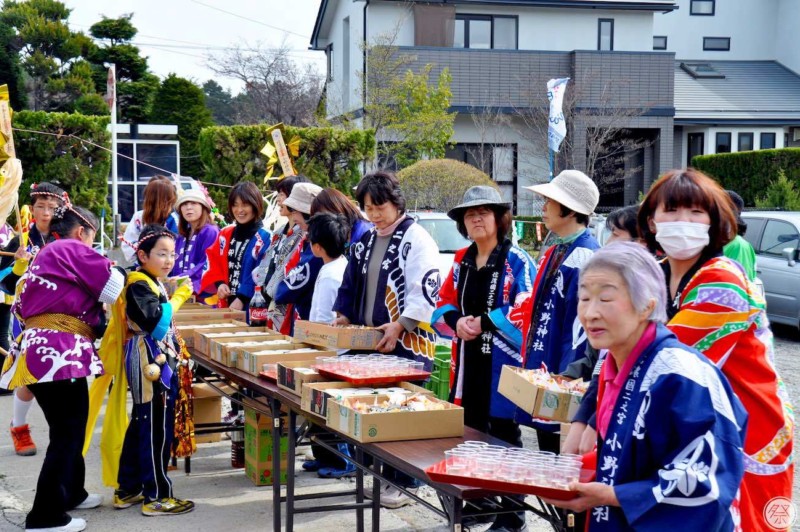
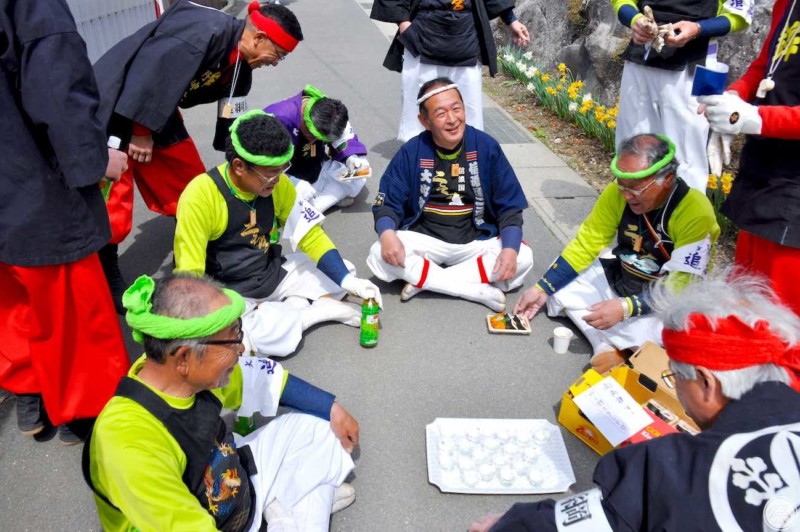
There are rest stops along the main route that offer complimentary refreshments. There are even numerous local homes along the way that prepare food and drinks for participants to enjoy as they rest. They may even invite you into their homes if they know a member in your group. Try interacting with the families of this region.
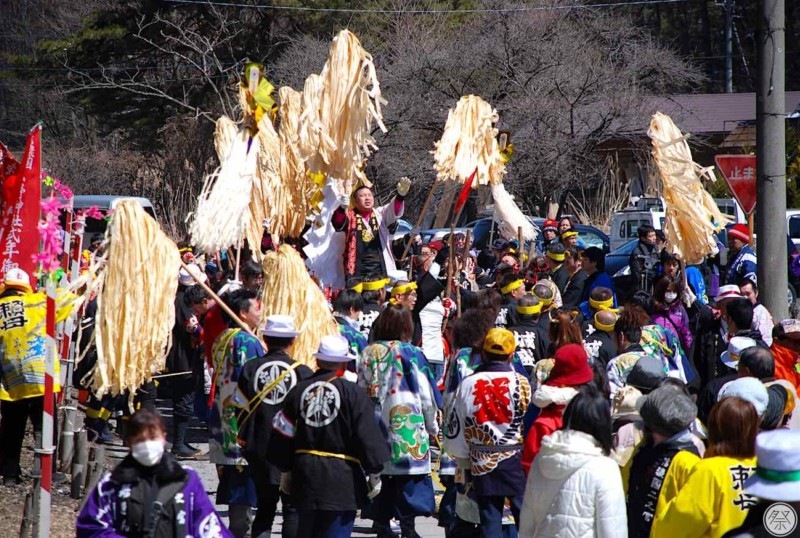
The Onbe is an indispensable tool in the Onbashira festival made by attaching a bushel of long thin slices of Japanese Cypress to the end of a stick. It is used by the Kiyarishu to direct, enliven and synchronize the ones pulling the Onbashira. The Onbe are sold in many different colors and designs—even ones that glitter and shine.
It is recommended for women, children and foreigners unfamiliar with the rules to stay away from the ropes at potential dangerous sections of the festival.
It is best to wear the appropriate Happi jackets when participating in the pulling of the Onbashira. Happis are sold near the train station and often in a set with twisted head towels called Nejiri Hachimaki.
When having food or drinks offered by the rest stops or the homes of locals, it is common custom to leave curtesy money (approx. half of price of consumed food/drink or 1800 mL bottle of sake.)
Sake is also offered free to those participating in the Satobiki. Please refrain from drinking too much.
Please do not enter local rice fields or private home property when trying to take videos or photographs of the festivities.
Access to Shiojiri City
[Nearest Station]
Ono Station on the JR Chuo Main Line
Venue
Ono Shrine
Address: 175 Kita Ono, Shiojiri City, Nagano Prefecture
Yahiko Shrine
Address: 3267 Ono, Tatsuno, Kamiinagun, Nagano Prefecture
Both are a 11m walk from the JR Ono Station (neighboring shrines)